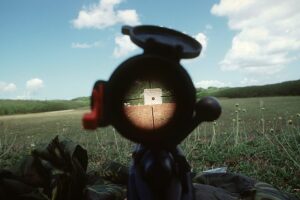Russia’s military modernization efforts take a significant step forward with the planned construction of two new Borei-A class ballistic missile submarines.
These latest additions will bolster the nation’s nuclear deterrence capabilities at sea.
The keels for these two Borei-AM submarines, an upgraded variant of the Borei-A class, are expected to be laid at the Sevmash shipyard sometime this year, Russian media reported Wednesday, March 27.
Once operational, these vessels will be divided between the Northern and Pacific Fleets, significantly bolstering Russia’s seaborne leg of its nuclear triad.
This three-pronged system, encompassing land-based intercontinental ballistic missiles (ICBMs), strategic bombers, and nuclear submarines, forms the cornerstone of Russia’s nuclear deterrence strategy.
The new Borei-A submarines represent a significant leap forward compared to their Cold War-era predecessors.
The Borei-class boasts a smaller size, requiring a reduced crew, while simultaneously incorporating advanced stealth technology.
This makes them significantly harder to detect compared to older models like the Project 941 Akula-class submarines (NATO reporting name “Typhoon“).
Remarkably, despite being half the size of the Akula class, the Borei-A retains a similar missile-carrying capacity, highlighting advancements in design and engineering.
The Spearhead of Naval Deterrence
By the end of the current decade, Russia anticipates having a total of twelve Borei and Borei-A class submarines operational.
These vessels are poised to become the backbone of Russia’s naval nuclear deterrence strategy.
They will progressively replace older models like the Kalmar-class submarines in the Pacific Fleet and the Delfin-class submarines in the Northern Fleet.
The Borei-A class represents a generational leap in submarine technology.
These fourth-generation vessels are considerably quieter than their predecessors, offering superior maneuverability, diving depth, and weapons control systems.
This enhanced stealth and agility make it more difficult for potential adversaries to track and target.
Additionally, the innovative pump-jet propulsion system significantly reduces their acoustic signature, further enhancing their ability to operate undetected.
Firepower and Range
The offensive capabilities of the Borei-A class are nothing short of formidable.
Each submarine is armed with 16 Bulava ballistic missiles, boasting an operational range exceeding 8,300 kilometers.
These missiles can be equipped with multiple independently targetable reentry vehicles (MIRVs), each carrying a nuclear warhead, significantly multiplying their destructive potential.
Furthermore, the Borei-A class retains a suite of 533mm torpedo tubes, providing them with additional offensive options against surface ships and other submarines.
Securing the Future of Nuclear Deterrence
With seven Borei-A class submarines already completed and three more under construction, Russia is well on its way to achieving its goal of a fourteen-strong Project 995/Project 995A submarine fleet.
These vessels are expected to be a mainstay of Russia’s nuclear triad, playing a critical role in deterring potential aggression for decades to come.
Experts predict these submarines will remain operational well into the 2040s, potentially even beyond.
The addition of the Borei-A class submarines signifies Russia’s unwavering commitment to maintaining a robust nuclear deterrent capability.
These advanced vessels represent a significant step forward in Russian naval technology and are certain to have a profound impact on the global strategic landscape for years to come.
However, this development also raises concerns about the potential for an arms race as other nations may feel compelled to bolster their own nuclear deterrence capabilities in response.
Continued international dialogue and arms control agreements remain crucial in fostering strategic stability and mitigating the risks associated with nuclear proliferation.



